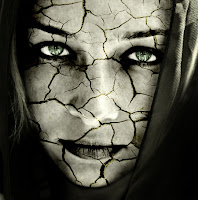Every day 4-8 oz. of water evaporates through the skin, and we don't even notice how it happens. Replenishing water by drinking more fluids is helpful, but does not guarantee smooth and resilient skin. Moisture balance is regulated by chemical reactions in tissues, and is not directly related to the amount of water you drink.
If we could apply water topically, it would not help much either. Skin does feel soft and moisturized right after a bath: it happens because the horny layer (the outermost skin layer), which is formed by dead skin cells, absorbs water. During a bath up to 2 oz. of water can be absorbed by the skin. But this water is not allowed any deeper than the surface cells. Later, within 10 minutes, all this water evaporates, leaving skin dry again.
Human skin has its own mechanism to prevent moisture loss. Our skin cells work hard to create a protective layer. This layer consists of oils, aminoacids, sugar compounds and other elements, either water or oil soluble. All together they bind with water and don't let it evaporate. Water, that is not allowed to leave skin surface, is absorbed by the horny layer cells. The skin becomes softer, smoother and more flexible.
Hot or cold air, low humidity, frequent contacts with water or cleansing solutions ruin the protective layer, and skin loses its natural ability to hold moisture. When water level in the skin drops by 10%, the skin becomes dry, itchy and flaky.
As we age, skin's protection mechanism slows down and skin becomes dry. In some people dry skin is inherited genetically.
Even though the outermost skin layer is made of dead cells, we have to take care of it. The primary function of the horny layer is protection of deeper skin layers, where new cells are born. Regular use of hydrating creams helps to prevent water loss, restore moisture balance and elasticity of the outer skin layer and help it do its job.
Oils, mucopolysaccharides, and fatty acids are widely used in cosmetics to prevent water loss. The most effective cosmetic ingredients for this purpose are liposomes, ceramides and sphingolipids.
Liposomes are microscopic spheres that can be used to encapsulate water, vitamins or other beneficial ingredients. Because these elements are similar in structure to cell membrane, they are easily utilized by the skin. They can penetrate skin surface, bind with it and release the substances they carry.
Ceramides and Sphingolipids are the elements that hold skin cells together so that the environment can not get in and the moisture can not get out. Lipids are lost with age, and the moisture barrier is weakened. Research shows that applying ceramides topically has the effect of generating ceramide production in the skin, thereby increasing the lipid content and reinforcing the protective barrier.
Look for creams with the above ingredients to keep your skin in its best condition and defy aging.
Read Other Health Related Articles




0 comments:
Post a Comment